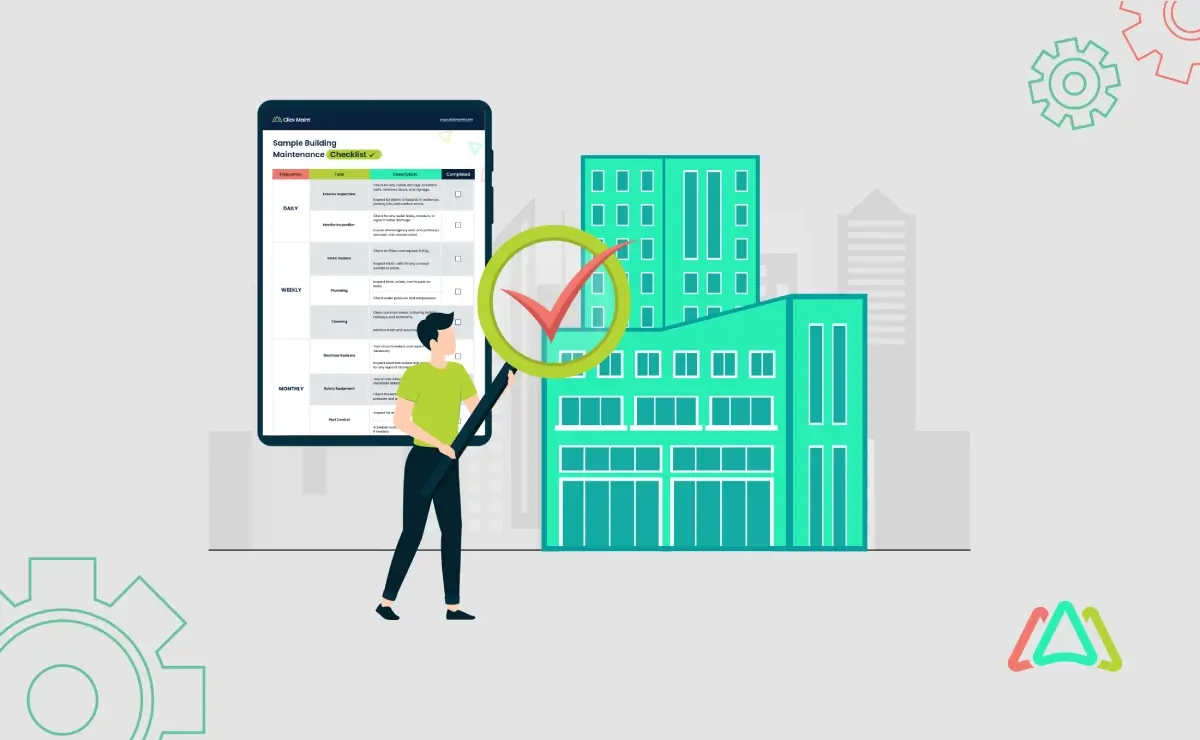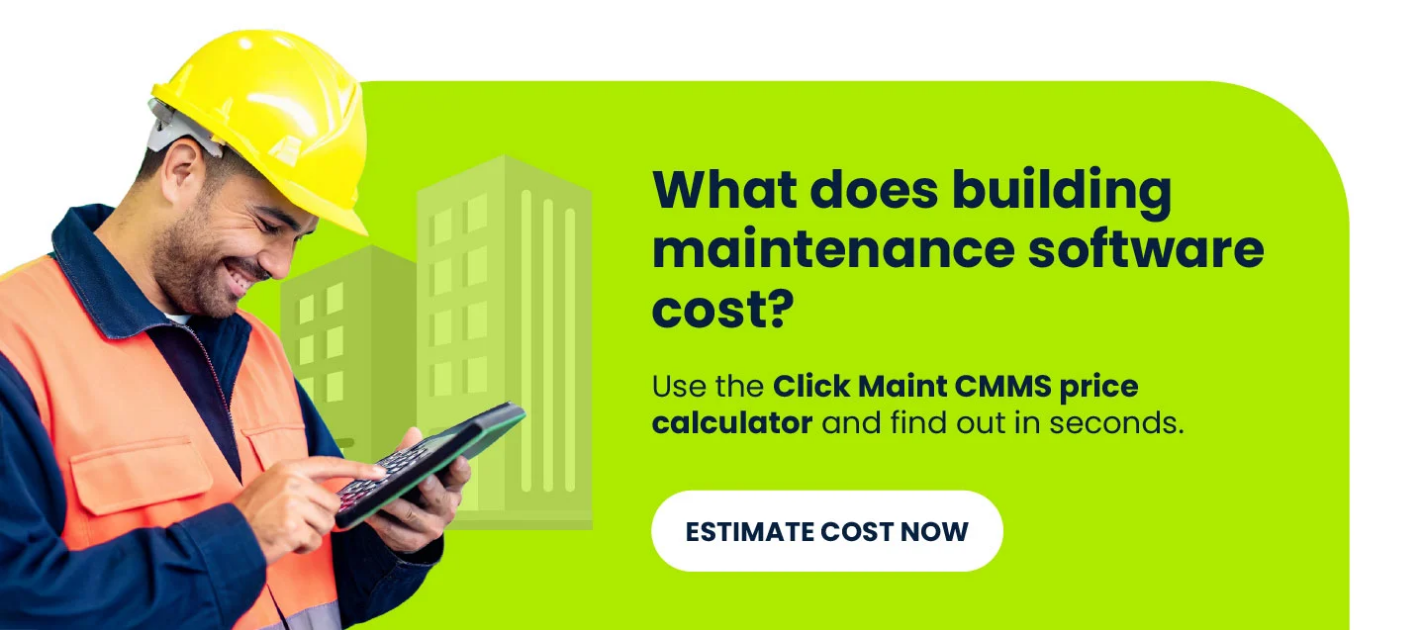
Building Maintenance Checklist: Stay Ahead of Repairs and Protect Your Investment
Regular building maintenance is essential for ensuring the safety, efficiency, and long-term value of any property. By regularly inspecting and addressing maintenance needs, you can prevent minor issues from becoming major, costly repairs. A well-maintained building not only complies with safety regulations but also provides a safe environment for occupants, minimizing the risk of accidents and health hazards. Furthermore, efficient building maintenance ensures that all systems operate optimally, reducing energy consumption and operational costs. Ultimately, a consistent maintenance schedule enhances the property’s value, making it more attractive to tenants, buyers, and investors.
This article on building maintenance checklists is written for a diverse range of stakeholders involved in facility management and upkeep. Building owners who have invested in property and aim to protect and increase its value over time will find it informative. Property managers responsible for the day-to-day operations and maintenance of buildings can use it to ensure everything runs smoothly. Facilities management teams, tasked with the comprehensive management of building systems and infrastructure, and maintenance staff, who perform regular checks and repairs, will benefit from its guidelines.

What is a Building Maintenance Checklist?
A building maintenance checklist is a structured document that outlines tasks, schedules, and responsibilities for maintenance activities in a building or property. The primary purpose of a building maintenance checklist is to streamline and organize maintenance efforts, ensuring that essential tasks are completed on time and efficiently. By documenting maintenance activities and schedules in a checklist format, property management professionals can easily track progress, prioritize tasks, and assign responsibilities. This proactive approach helps prevent potential issues, reduce downtime, and extend the lifespan of buildings and assets. It serves as a comprehensive guide for property owners, managers, and maintenance personnel to systematically manage upkeep and ensure the safety, functionality, and longevity of structures.

Components of a Checklist
A typical building maintenance checklist includes the following components:
1. Inspection Items
This section outlines specific areas and components of the building that require regular inspection to identify potential issues or areas of concern. Common inspection items may include structural elements, mechanical systems, electrical systems, plumbing fixtures, safety equipment, and exterior features.
2. Maintenance Tasks
The checklist details the maintenance tasks that need to be performed on a regular basis to ensure the proper functioning and condition of the building. These tasks may encompass routine maintenance activities such as cleaning, lubricating, adjusting, repairing, or replacing various components and systems.
3. Frequency of Tasks
Each maintenance task includes details on the recommended frequency for completion, indicating how often it should be performed. The frequency may vary depending on factors such as the type of task, the specific component or system being addressed, and environmental conditions.
4. Responsible Parties
The checklist assigns responsibility for each maintenance task to a designated individual or team. Clear delineation of responsibilities ensures accountability and facilitates effective coordination and communication among maintenance personnel.
The Importance of a Building Maintenance Checklist
1. Consistency
A maintenance checklist ensures consistent maintenance practices across all aspects of property management. By providing a standardized set of tasks and procedures, a checklist guarantees that every maintenance activity is performed correctly and uniformly, regardless of who is carrying it out. This consistency helps prevent important tasks from being overlooked and ensures that maintenance standards are upheld across the board. Regularly updated checklists facilitate accountability and make it easier to train new maintenance staff by providing clear guidelines to follow. Ultimately, this leads to a more reliable and efficient maintenance process, preserving the integrity and functionality of the property.
2. Safety and Compliance
Maintaining safety standards and regulatory compliance is critical in property management, and well-documented maintenance checklists are key components. By including all necessary safety checks and regulatory requirements, a checklist helps ensure that all safety protocols are followed and that the property complies with local, state, and federal regulations. Regular use of a checklist can identify potential safety hazards before they become serious issues, thereby protecting the well-being of occupants and reducing liability risks. Additionally, thorough documentation of completed maintenance tasks can provide proof of compliance during inspections and audits, safeguarding the property owner or manager against legal and financial penalties.
3. Cost-Efficiency
Preventive maintenance, guided by a well-structured checklist, can lead to significant cost savings over time by avoiding major repairs. Regularly scheduled maintenance tasks, such as inspecting and servicing equipment, can identify and address minor issues before they escalate into costly emergencies. A checklist ensures that these preventive measures are consistently performed, thereby extending the lifespan of building systems and infrastructure. This proactive approach not only reduces the frequency and severity of repairs but also minimizes downtime and disruption to building operations. In the long run, the investment in routine maintenance guided by a checklist is far more cost-efficient than the expenses associated with unexpected breakdowns and major repairs.
Essential Items to Include in Your Building Maintenance Checklist
Maintaining a building requires careful attention to detail and a proactive approach to upkeep. To ensure that your property remains in optimal condition, it's essential to include the following items in your building maintenance checklist:
1. Exterior Maintenance
1.1 Roof Inspection and Repair
Regularly inspect the roof for signs of damage, such as leaks, missing shingles, or deteriorating flashing. Prompt repairs can prevent water intrusion and structural damage.

1.2 Gutter Cleaning
Clear debris from gutters and downspouts to prevent water buildup and potential water damage to the building's foundation or exterior walls.
1.3 Exterior Painting and Sealing
Periodically painting and sealing exterior surfaces, including walls, trim, and doors, helps maintain the exterior appearance and protects against weathering.
1.4 Landscaping and Grounds Upkeep
Maintain landscaping elements such as lawns, trees, shrubs, and flower beds. Regular mowing, trimming, watering, and fertilizing can enhance curb appeal and preserve property value. A study in the Journal of Arboriculture found that commercial properties with a “high-quality landscape” rented for nearly 7% more than comparable properties with lower-quality landscapes.
2. Interior Maintenance
2.1 HVAC System Inspection and Filter Replacement
Schedule regular inspections of the heating, ventilation, and air conditioning (HVAC) system to ensure proper operation and energy efficiency. Replace air filters as recommended to maintain indoor air quality and prevent system malfunctions.
2.2 Plumbing Checks for Leaks and Drainage
Inspect plumbing fixtures, pipes, and drains for leaks, clogs, or signs of water damage. Addressing plumbing issues promptly can prevent water waste and property damage.
2.3 Electrical System Inspection for Safety and Efficiency
Test electrical outlets, switches, and circuit breakers for proper functioning and safety. Inspect wiring for signs of wear or damage and address any issues promptly to reduce the risk of electrical hazards.
2.4 Structural Integrity Assessment
Regularly assess the structural integrity of the building, including walls, floors, ceilings, and foundations. Look for signs of cracks, settling, or moisture intrusion that may indicate underlying structural issues.
2.5 Fire Safety Equipment Inspection
Test smoke detectors, fire alarms, extinguishers, and emergency lighting systems to ensure they are in working order and compliant with safety regulations.
3. Common Areas and Facilities
3.1 Elevator Maintenance
Schedule regular maintenance and inspections for elevators to ensure safe and reliable operation. Address any issues promptly to minimize downtime and ensure compliance with safety standards.
3.2 Lighting Checks
Inspect interior and exterior lighting fixtures for proper functioning and replace bulbs or fixtures as needed to maintain adequate illumination and safety.
3.3 Security System Inspection
Test security cameras, alarms, access control systems, and locks to ensure they are functioning correctly and providing adequate protection for the building and its occupants.
3.4 Common Area Cleaning and Maintenance
Clean and maintain common areas such as lobbies, hallways, stairwells, and parking lots regularly to ensure a safe, sanitary, and inviting environment for residents, tenants, and visitors.
Customize Your Building Maintenance Checklist
1. Assessing Building Needs
Begin by evaluating your building's specific requirements based on its age, type, and usage. Consider factors such as its size, the materials used in its construction, the complexity of its systems (e.g., HVAC, plumbing, electrical), and the frequency of occupancy. Identifying your building's unique characteristics and challenges will help you prioritize maintenance tasks and allocate resources effectively.
2. Researching Regulations and Best Practices
Review local building codes, industry standards, and manufacturer recommendations for maintenance guidelines. Familiarize yourself with regulatory requirements pertaining to safety, accessibility, and environmental compliance. Additionally, research best practices and emerging trends in building maintenance to ensure your checklist reflects current industry standards and protocols.
3. Consulting with Experts
Seek input from maintenance professionals, contractors, and other stakeholders to tailor the checklist to your building's needs. Collaborate with experts who have specialized knowledge and experience in areas such as HVAC systems, plumbing, electrical systems, roofing, and structural integrity. Their insights can help you identify potential maintenance challenges, develop effective strategies for prevention and mitigation, and establish realistic timelines for maintenance tasks.
Sample Building Maintenance Checklist
|
Frequency |
Task |
Description |
|
Daily |
Exterior Inspection |
Check for any visible damage to exterior walls, windows, doors, and signage. |
|
Inspect for debris or hazards in walkways, parking lots, and outdoor areas. |
||
|
Interior Inspection |
Check for any water leaks, moisture, or signs of water damage. |
|
|
Ensure all emergency exits and pathways are clear and unobstructed. |
||
|
Test fire alarm systems and emergency lighting. |
||
|
Weekly |
HVAC System |
Check air filters and replace if dirty. |
|
Inspect HVAC units for any unusual sounds or odors. |
||
|
Plumbing |
Inspect sinks, toilets, and faucets for leaks. |
|
|
Check water pressure and temperature. |
||
|
Cleaning |
Clean common areas, including lobbies, hallways, and restrooms. |
|
|
Remove trash and recycling from bins. |
||
|
Monthly |
Electrical Systems |
Test circuit breakers and reset if necessary. |
|
Inspect electrical outlets and switches for any signs of damage. |
||
|
Safety Equipment |
Test smoke detectors and carbon monoxide detectors. |
|
|
Check fire extinguishers for proper pressure and accessibility. |
||
|
Pest Control |
Inspect for any signs of pest activity. |
|
|
Schedule routine pest control treatments if needed. |
||
|
Quarterly |
Exterior Maintenance |
Inspect roof and gutters for debris and damage. |
|
Trim trees and shrubs away from the building. |
||
|
Parking Lot |
Check for potholes, cracks, or uneven surfaces. |
|
|
Ensure parking lot lighting is functioning properly. |
||
|
Annual |
Building Envelope |
Conduct a comprehensive inspection of the building envelope for signs of wear or damage. |
|
Seal any cracks or gaps in windows, doors, or walls. |
||
|
Elevator Maintenance |
Schedule annual elevator inspections and maintenance with a certified technician. |
|
|
Fire Sprinkler System |
Test fire sprinkler systems and perform any necessary maintenance or repairs. |
Implementing and Managing Your Checklist
Effectively implementing and managing your building maintenance checklist is essential for ensuring the ongoing upkeep and performance of your property. Follow these key steps to establish a structured approach to maintenance:
1. Setting Up a Schedule
Establish a regular maintenance schedule based on the checklist items and their recommended frequencies. Determine how often each maintenance task needs to be performed—whether it's daily, weekly, monthly, quarterly, or annually. Create a calendar or scheduling system to track upcoming tasks and ensure they are completed on time. Consider factors such as seasonal changes, occupancy levels, and equipment usage patterns when setting up your maintenance schedule.
2. Assigning Responsibilities
Clearly define roles and responsibilities for maintenance tasks, including who will perform inspections, repairs, and follow-up actions. Assign specific individuals or teams to each task and ensure they understand their responsibilities and deadlines. Communicate expectations clearly and provide training or guidance as needed to ensure tasks are performed correctly and efficiently. Encourage collaboration and accountability among maintenance personnel to foster a proactive and coordinated approach to maintenance.
Using CMMS Software for Tracking and Documentation
CMMS software provides a centralized platform for managing all aspects of building maintenance. It allows you to create, schedule, and track maintenance tasks and store critical maintenance data in a secure and accessible manner.
1. Tracking Completed Tasks
With CMMS software, you can easily track completed maintenance tasks in real time. Maintenance technicians can log into the system to view assigned tasks, mark them as completed once finished, and provide notes or updates as needed. This real-time visibility enables supervisors and managers to monitor progress and ensure that tasks are completed on schedule.
2. Documenting Inspections
CMMS software enables efficient and accurate inspection documentation. The system allows you to create customizable inspection templates to capture relevant data, such as inspection findings, observations, and corrective actions. Standardizing inspection processes and documentation ensures consistency and compliance with regulatory requirements.
3. Recording Maintenance Histories
One of the key advantages of CMMS software is its ability to maintain comprehensive maintenance histories for assets and equipment. Each maintenance task performed is logged in the system, along with details such as date, time, technician involved, and work performed. This historical data provides valuable insights into asset performance, maintenance trends, and lifecycle costs, enabling informed decision-making and optimization of maintenance strategies.
TABLE OF CONTENTS
Keep Reading
Every maintenance professional faces it sooner or later — that critical time when an aging ...
18 Nov 2025
The term 'best' is often used loosely, without a clear understanding of its context or ...
14 Nov 2025
In the not too distant past, maintenance strategies have been defined by reaction—fixing ...
13 Nov 2025
Tax season is the time of year that often sends a ripple of anxiety through many of us. The ...
11 Nov 2025
Selecting a Computerized Maintenance Management System (CMMS) can, at first glance, be an ...
4 Nov 2025
In healthcare facilities, equipment uptime involves more than achieving operational ...
31 Oct 2025
Companies are subject to economic ups and downs, also known as economic volatility. Today, ...
30 Oct 2025
Maintenance challenges are a constant struggle, with unplanned downtime costing manufacturers ...
27 Oct 2025
Last winter, a maintenance technician at a U.S. paper mill ignored a predictive alert that ...
10 Oct 2025
Many organizations proudly say they “have a CMMS,” but ownership alone doesn’t equal ...
9 Oct 2025
Every maintenance team is under pressure to do more with less. Unplanned downtime is often ...
7 Oct 2025
The implementation of simple, yet powerfully effective, checklists has repeatedly ...
3 Oct 2025
In manufacturing, every second counts. When production stops, whether due to scheduled ...
2 Oct 2025
The increasing cost of maintenance, lack of accountability, and siloed systems leave many ...
30 Sep 2025
Preventive maintenance is one of those things maintenance teams know they need to do, but it ...
26 Sep 2025
Public services are essential to daily life. The provision of safe roads, functional transit, ...
25 Sep 2025
For most manufacturing facilities, a major focus of their maintenance teams revolves around ...
24 Sep 2025
Have you ever tried explaining to the CEO why the production line has been down for hours ...
18 Sep 2025
Over the past few decades, the hotel industry has undergone a dramatic transformation. ...
16 Sep 2025
Profitability is at the top of the list for manufacturing organizations when conversations ...
12 Sep 2025







